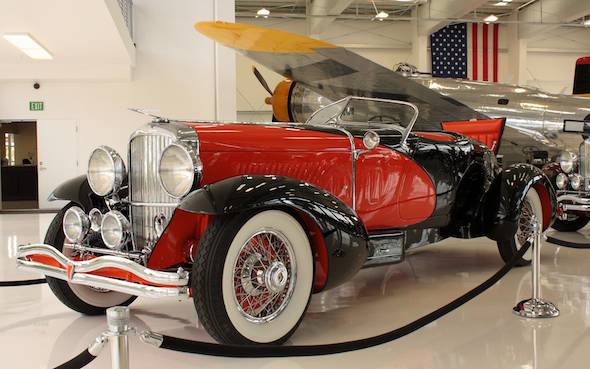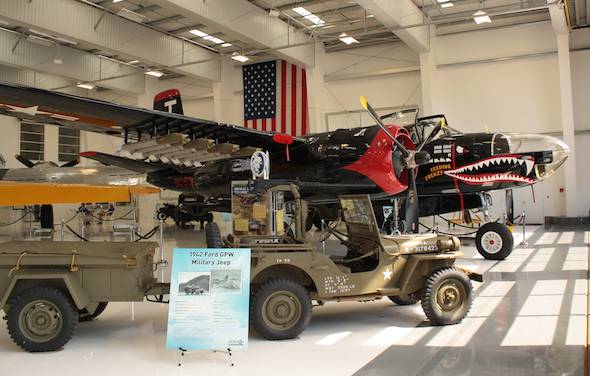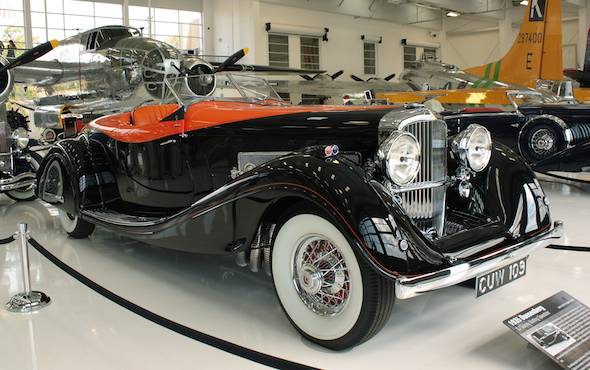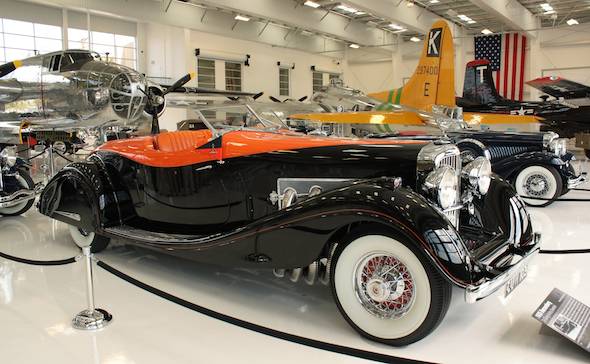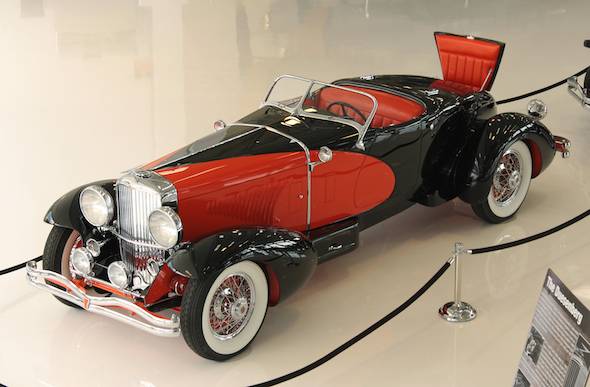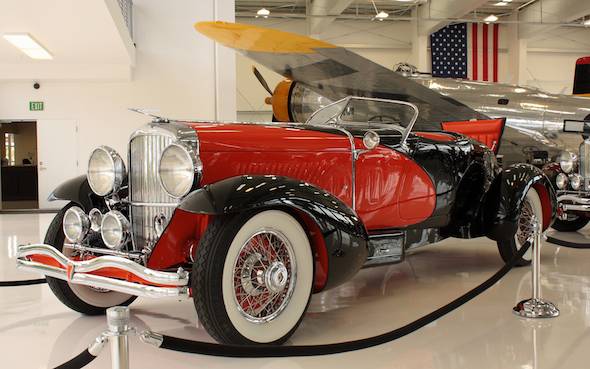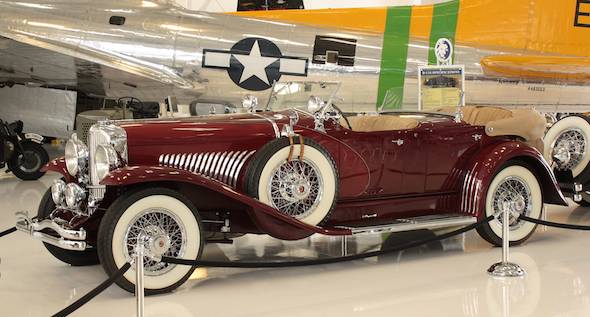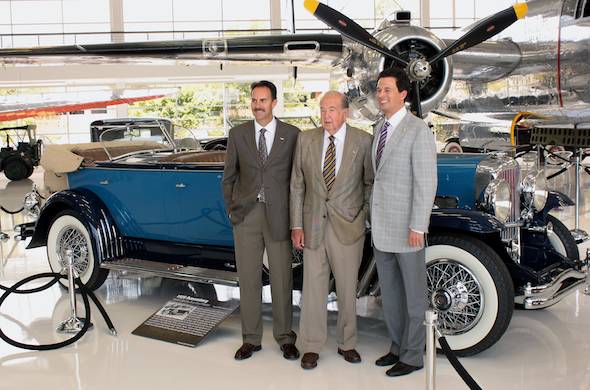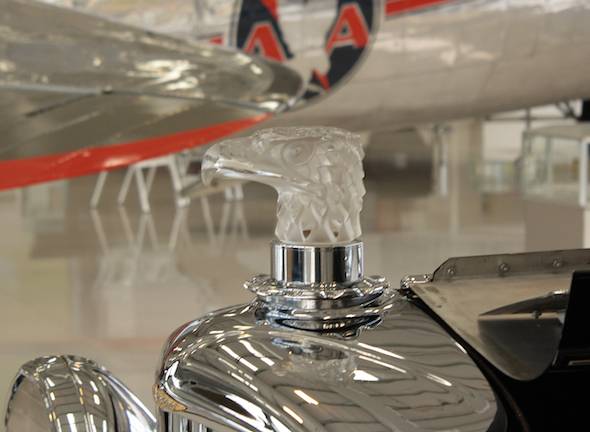A Duesie of a Supercar Exhibit
Even by the standards of supercar exhibits, there’s something a little extraordinary about the current floor line-up at the Lyon Air Museum. The exquisite cars on display feature unusually large supercharged American engines…420 cubic inches of displacement. That’s 6,882 cc’s, slightly bigger than the engine that powers the prodigious 2012 Bentley Mulsanne flagship. And the exquisite bodywork on some of the cars rivals anything that Bugatti or Aston Martin are producing. But the truly special qualifier of the technological and aesthetic marvels on display is that none of these supercars were produced after World War II. Welcome to the fabulous world of Duesenberg!
Generally considered to be America’s first supercar and the reigning king of speed and style in the prewar period, Duesenbergs continue to be as revered today as they were back in the 1930s. Some of the country’s most ardent and deep-pocketed collectors swear by them, including Jay Leno and General William Lyon. OK, granted, in non-collecting circles, General Lyon’s name doesn’t evoke nearly the recognition of his comedian counterpart, but consider this. The retired Air Force general and onetime transport pilot in the Korean War, now well into his 80s, was the chief of the U.S Air Force Reserve from 1975 to 1979, and after retiring founded and developed the Newport Beach, CA-based William Lyon Homes, one of the most successful and prolific American homebuilders in business today.
As enamored with aviation history as he is with classic automobiles, General Lyon in 2009 established the Lyon Air Museum in one of the hangars at the John Wayne Airport in Orange County. In addition to providing a great place to show off his World War II U.S. Air Force B-25 and B-17 bombers, the space allows the General to occasionally exhibit some of his numerous cars, many of which have won awards at top national concours d’elegance. Such is the case with the current exhibit of ten Duesenbergs, which will run through July 24. Here’s a sampling of what awaits visitors:
1935 Duesenberg Model SJ Speedster by Gurney-Nutting
Readers of this blog might recall this Duesie from my column two weeks ago, when the car won the Auburn/Cord/Duesenberg class at the Dana Point Concours d’Elegance. Featuring a sensational body by English coachbuilder Gurney-Nutting, this car is the last Duesenberg built, and was ordered new by the Maharaja Holkar of Indore. Fearing Japanese invasion of his homeland, however, the Maharaja had the car shipped to his home in Santa Ana, California, where the car eventually took up a more permanent Southern California residence.
1931 Duesenberg Model Weymann “Taper Tail” Speedster
Similar to Auburn’s Boattail Speedsters of the era, this Weymann-bodied car (also pictured at top) truly conveys the sporty character of Duesenberg. This car was owned by commercial aviation pioneer and founder of the fledgling United Airlines, Walter Varney.
1933 Duesenberg SJ Murphy Convertible Coupe
With a “disappearing top” that would retract into the trunk area, a forerunner of today’s automatic retractable hardtops, this sports car of a Duesenberg was built for Sid Smith, a period cartoonist best known for the Andy Gump comic strip.
1929 Duesenberg Model J Dual Cowl Phaeton by LeBaron
With engine J101, this car is the first of the mighty Model J’s, and was actually used as a factory demonstration car. LeBaron’s sweep panel design (note the curve that proceeds from the hood to the door panels) dynamically decorated many of the open-bodied Duesies that the coachbuilder produced.
General Lyon poses here (at center) with his son Bill (right) and Lyon Air Museum president Mark Foster (left). They stand in front of a Murphy-bodied 1929 Duesenberg Dual Cowl Phaeton that was first owned by John J.McCarthy, president of the Cracker Jack candy company, and later depicted on the big screen in the 1982 musical Annie. Daddy Warbucks, indeed!
For more information, please visit www.lyonairmuseum.org
All photos © by Mike Daly

